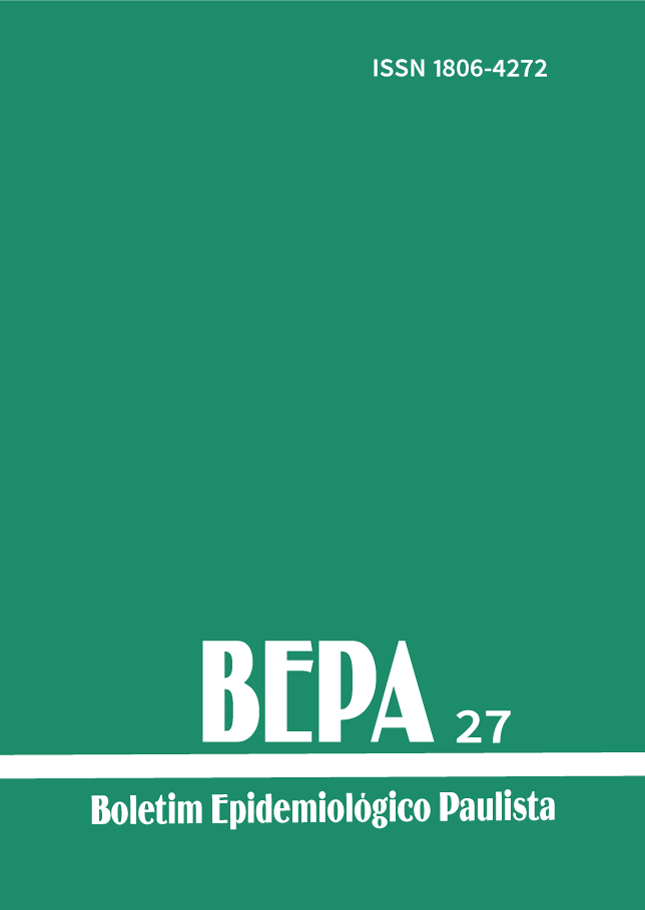Abstract
Foodborne botulism, a severe neuroparalytic disease, is caused by ingesting of food containing preformed Clostridium botulinun neurotoxin. Although, cases of botulism have been usually associated with canned vegetables, fruits or meat, generally homemade products, it is not improbable that the disease can be caused by other kind of food. On February 02, 2006, the Epidemiologic Surveillance Group from Hospital das Clínicas, from School of Medicine of the University of São Paulo, in the city of São Paulo, notified to the Center for Epidemiologic Surveillance one suspected botulism case, resident in the city of Atibaia, SP. Type A toxin was detected in a serum sample from the patient and in the suspected food. This report summarizes the findings of the botulism investigation, which linked disease to the ingestion of commercial chicken pie with cream cheese. Based on clinical features, therapeutic antitoxin was promptly administrated to the patient. Educational and sanitary measures were developed to prevent new cases.
References
1. C.V.E. Centro de Vigilância Epidemiológica "Prof. Alexandre Vranjac". Manual de Botulismo Orientações para Profissionais de Saúde. São Paulo: Secretaria de Estado da Saúde 2002.
2. Cecchini E, Ayala SEG, Coscina Neto AL e Ferrareto AMC. Botulismo. In: Veronesi R; Focaccia R, editores. Tratado de Infectologia. 1ª ed. São Paulo: Atheneu 1997; p. 565-74.
3. Abram S. Benenson (Editor). Control of Communicable Diseases Manual.16th ed. Washington: American Public Health Association 1995.
4. Centers for Disease Control and Prevention. Botulism in United States, 1899-1996, handbook for epidemiologists, clinicians and laboratory workers. Atlanta: The Centers 1998.
5. Centers for Disease Control and Prevention. Botulism and Commercial Pot Pie, California. MMWR 1983; 352(3):39-40.
6. Brasil. Ministério da Saúde. Portaria N. 33, de 14 de julho de 2005. Inclui doenças de notificação compulsória, define agravos de notificação imediata e a relação dos resultados laboratoriais que devem ser notificados pelos Laboratórios de Referência Nacional ou Regional. Diário Oficial da União, Brasília; p. 111, 15 jul. 2005. Seção 1.
Solomon, HM; Johnson EA; Bernard DT; Arnon, SS; Ferreira JL. Clostridium botulinum and its toxins. In: Downes, F.P; Ito, K. Compendium of Methods for the Microbiological Examination of Foods. 4th ed. Washington, DC: APHA; 2001; p. 317-324.
8. Centers for Disease Control and Prevention. Outbreak of Botulism Type E Associated with Eating a Beached Whale, Western Alaska, July 2002. MMWR 2003; 52(2):24-26
9. Centers for Disease Control and Prevention. Botulism Outbreak Associated With Fermented Food, Alaska, 2001. MMWR 2001; 50(32):680-2.
10. Organização Pan-americana de Saúde. HACCP: Instrumento Essencial para a Inocuidade de Alimentos. Buenos Aires, Argentina: Opas/Inppaz, 2001.
Organização Mundial da Saúde. "Regras de Ouro" da OMS para a preparação higiênica dos alimentos. Genebra: OMS; sem data.

This work is licensed under a Creative Commons Attribution 4.0 International License.
Copyright (c) 2006 Divisão de Doenças de Transmissão Hídrica e Alimentar
